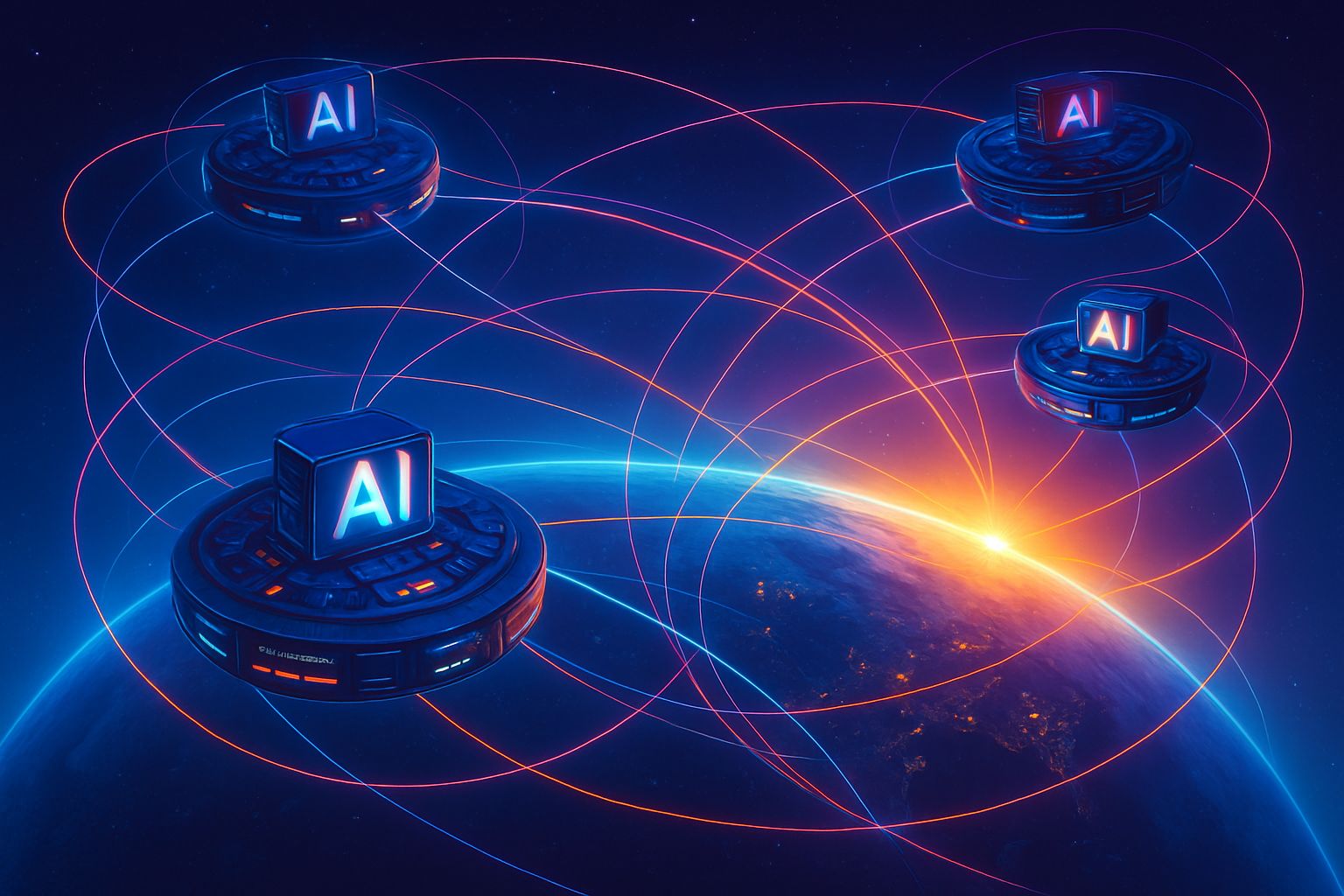
AI CERTS
5 hours ago
Google bets on orbital AI datacenters

Nevertheless, the vision touches everything from space infrastructure financing to radiation-hardened silicon. This article dissects the plan, evaluates hurdles, and outlines career opportunities for professionals eyeing extraterrestrial computing.
Moonshot Space Vision Context
Project Suncatcher imagines clusters of solar-powered satellites orbiting in dawn-dusk sun-synchronous paths. Consequently, each craft would host Google Trillium TPUs linked by free-space optical lasers. The orbital cluster behaves like a single cloud region, yet it floats 650 kilometers above Earth.
During the Sundar Pichai announcement, the CEO quipped, “Our TPUs are headed to space.” Meanwhile, research lead Travis Beals argued that space may be the best place to scale AI compute. These statements underline Google’s intent to pioneer orbital AI datacenters despite admitting the idea remains experimental.
Moreover, the vision aligns with rising public concern about terrestrial grid strain. Google positions the project as an eventual energy demand solution that could bypass land, water, and permitting bottlenecks. Consequently, the company pitches orbital capacity as essential space infrastructure for the coming AI decade.
In summary, Google’s moonshot proposes shifting compute into continuous sunlight. However, technical execution determines whether this extraterrestrial computing dream survives. Consequently, a closer inspection of the hardware blueprint is needed.
Technical Building Blocks Details
Firstly, hardware survivability defines feasibility. Google bombarded Trillium TPUs with proton beams up to 15 krad(Si). Nevertheless, no permanent failures appeared, providing comfortable radiation margin for a five-year mission.
Additionally, solar panels in the chosen orbit receive almost eight times more annual energy than mid-latitude ground arrays. Therefore, satellites draw abundant power without grid connections, reinforcing the orbital AI datacenters model.
Moreover, Google bench-tested a free-space optical link delivering 1.6 Tb/s bidirectional throughput with commercial components. That bandwidth approaches terrestrial leaf-spine fabrics.
Laser Links Capacity Metrics
Google’s architecture models 81 satellites arranged within a one-kilometer cluster. Consequently, each 100-200 m link must carry roughly 10 Tb/s. While the bench demo shows promise, scaling those lasers in vibration-rich space infrastructure remains an open question.
The company plans a 2027 learning mission with Planet Labs to validate inter-satellite links in orbit. Subsequently, performance data will feed the next design iteration.
These hardware insights illustrate progress yet expose daunting integration gaps. Nevertheless, economics will ultimately decide viability. Therefore, the financial case deserves equal scrutiny.
Energy Economics Rationale Explained
Energy analysts warn that global data centers could consume up to 298 GW by 2030. Consequently, firms crave an energy demand solution that scales without fossil dependencies.
Google projects launch costs dropping below $200 per kilogram by the mid-2030s. In contrast, on-orbit solar electricity would then rival terrestrial kWh prices, making orbital AI datacenters cost competitive.
The research lists several economic levers:
- Near-continuous solar exposure slashes operating electricity bills.
- Vacuum cooling eliminates expensive water systems.
- No land or building permits accelerate deployment.
- Reusable rockets reduce capital expenditure per satellite.
Moreover, continuous sunlight means servers operate at full duty cycles, boosting revenue per accelerator. Nevertheless, the model assumes long satellite lifetimes to amortize launch emissions.
Overall, cheaper launches could align space and ground economics. However, technical and regulatory risks may erode those savings. Accordingly, the next section examines the project’s most pressing hazards.
Risks And Challenges Ahead
Space is unforgiving. Radiation, debris, and thermal extremes threaten hardware longevity. Additionally, repairing failed nodes inside tight one-kilometer clusters remains difficult.
Industry critics highlight potential astronomy interference. In contrast, astronomers already compare satellite streaks to “bugs on a windshield.” Adding hundreds of orbital AI datacenters units could intensify that issue.
Furthermore, sustained launch activity raises carbon concerns. The Sundar Pichai announcement acknowledged these debates yet provided limited lifecycle data.
Regulators will also scrutinize sovereignty, spectrum use, and laser safety. Consequently, Google must craft a transparent governance framework for its space infrastructure ambitions.
These challenges highlight critical gaps. Nevertheless, competitive pressure ensures experimentation will continue. The competitive landscape offers clues about pacing.
Competitive Industry Landscape Snapshot
Google is not alone. Starcloud flew Nvidia H100 GPUs aboard Starcloud-1 in November 2025. Meanwhile, SpaceX openly explores in-orbit compute concepts.
Moreover, startups tout extraterrestrial computing services for edge analytics and defense tasks. Consequently, venture funds are channeling capital into new space infrastructure plays.
Nevertheless, Google’s deep machine-learning stack and cloud customer base give it a potent advantage. The company can integrate orbital AI datacenters directly into existing cloud regions, offering seamless scaling.
Analysts predict that first movers achieving robust optical networks will capture premium enterprise workloads. However, demonstration missions over the next three years will determine winners.
Competition accelerates innovation yet compresses timelines. Therefore, professionals should prepare for new skills demands. The next section explores capability building.
Future Outlook Roadmap Highlights
Google targets two prototype launches with Planet by early 2027. Subsequently, larger constellations could follow if metrics meet targets.
Meanwhile, enterprises are drafting strategies to integrate extraterrestrial computing endpoints into hybrid clouds. Consequently, talent versed in orbital dynamics, laser networking, and radiation-aware software will command premiums.
Professionals can enhance their expertise with the AI Architect™ certification. Moreover, that coursework covers distributed ML architectures relevant to orbital AI datacenters deployment.
Additionally, cloud architects should monitor launch economics, regulatory shifts, and optical communication standards. Therefore, continuous learning remains essential.
In short, Project Suncatcher could redefine how and where models run. However, measured milestones will dictate adoption curves. The conclusion distills key insights for decision-makers.
Project Suncatcher remains an ambitious bet. Nevertheless, orbital AI datacenters could unlock near-limitless solar power while easing grid strain. The Sundar Pichai announcement set a clear 2027 milestone and ignited industry debate. If launch costs fall, the concept offers a scalable energy demand solution beyond Earth. However, regulators must balance orbital AI datacenters growth with debris mitigation. Consequently, leaders should track prototype outcomes, pursue specialized training, and evaluate partnership opportunities. Ultimately, orbital AI datacenters may shift cloud geography from deserts to dawn-dusk orbits. That change could create a resilient layer of space infrastructure.



